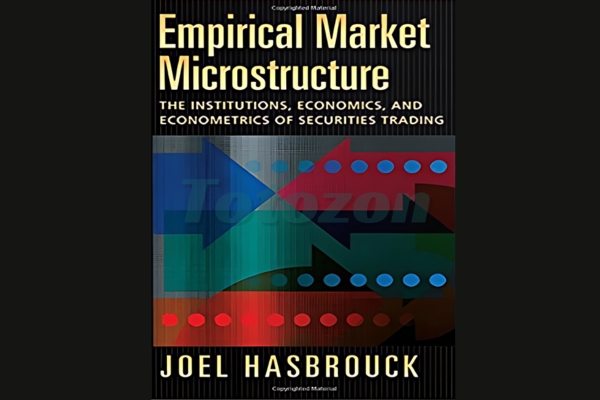-
×
 Order flow self-study training program with iMFtracker
1 × $10.00
Order flow self-study training program with iMFtracker
1 × $10.00 -
×
 Best of the Best: Collars with Amy Meissner & Scott Ruble
1 × $15.00
Best of the Best: Collars with Amy Meissner & Scott Ruble
1 × $15.00 -
×
 0 DTE Options Trading Workshop with Aeromir Corporation
1 × $15.00
0 DTE Options Trading Workshop with Aeromir Corporation
1 × $15.00 -
×
 The Complete Guide to Multiple Time Frame Analysis & Reading Price Action with Aiman Almansoori
1 × $13.00
The Complete Guide to Multiple Time Frame Analysis & Reading Price Action with Aiman Almansoori
1 × $13.00 -
×
 SQX Mentorship with Tip Toe Hippo
1 × $23.00
SQX Mentorship with Tip Toe Hippo
1 × $23.00 -
×
 ICT Prodigy Trading Course – $650K in Payouts with Alex Solignani
1 × $15.00
ICT Prodigy Trading Course – $650K in Payouts with Alex Solignani
1 × $15.00 -
×
 The Prop Trading Code with Brannigan Barrett - Axia Futures
1 × $23.00
The Prop Trading Code with Brannigan Barrett - Axia Futures
1 × $23.00 -
×
 Options Trading & Ultimate MasterClass With Tyrone Abela - FX Evolution
1 × $54.00
Options Trading & Ultimate MasterClass With Tyrone Abela - FX Evolution
1 × $54.00 -
×
 The Orderflows Trade Opportunities Encyclopedia with Michael Valtos
1 × $8.00
The Orderflows Trade Opportunities Encyclopedia with Michael Valtos
1 × $8.00 -
×
 Matrix Spread Options Trading Course with Base Camp Trading
1 × $31.00
Matrix Spread Options Trading Course with Base Camp Trading
1 × $31.00
Empirical Market Microstructure
$6.00
File Size: Coming soon!
Delivery Time: 1–12 hours
Media Type: Online Course
Empirical Market Microstructure
Understanding the intricacies of financial markets is crucial for investors, traders, and policymakers. One area that delves deep into these complexities is Empirical Market Microstructure. This article explores its fundamental aspects, offering insights into how it shapes market behavior and efficiency.
What is Market Microstructure?
Market microstructure examines the mechanisms and systems that facilitate trading in financial markets. It focuses on the processes and outcomes of exchanging assets, emphasizing the role of market participants and the rules governing trading.
Historical Background
Market microstructure research has evolved significantly since its inception. Initially, it was a theoretical field, but the advent of technology and data analytics transformed it into an empirical science.
The Importance of Market Microstructure
Market microstructure is crucial because it impacts market efficiency, liquidity, and the cost of trading. By understanding its principles, we can better navigate and optimize our trading strategies.
Core Concepts in Market Microstructure
Order Types and Trading Mechanisms
Understanding different order types and trading mechanisms is fundamental to market microstructure.
Market Orders vs. Limit Orders
- Market Orders: Execute immediately at the best available price.
- Limit Orders: Execute at a specified price or better, providing control over execution prices.
Auction Markets
Auction markets, like the NYSE, facilitate trading through a central auction mechanism, matching buyers and sellers.
Bid-Ask Spread
The bid-ask spread is the difference between the highest price a buyer is willing to pay (bid) and the lowest price a seller will accept (ask). It reflects market liquidity and transaction costs.
Factors Influencing Bid-Ask Spread
- Liquidity: Higher liquidity typically reduces the spread.
- Volatility: Increased volatility can widen the spread.
Market Impact and Price Formation
Market impact refers to the effect of a trade on the market price. Large orders can move prices, impacting execution costs and overall market behavior.
Price Discovery
Price discovery is the process through which markets determine the price of an asset. Efficient price discovery reflects all available information, leading to fair market prices.
Empirical Studies in Market Microstructure
High-Frequency Trading (HFT)
High-frequency trading involves executing numerous trades at incredibly fast speeds. Empirical studies have shown its impact on market liquidity and volatility.
Benefits of HFT
- Increased Liquidity: HFT can provide continuous liquidity, benefiting all market participants.
- Reduced Transaction Costs: By narrowing bid-ask spreads, HFT can lower trading costs.
Criticisms of HFT
- Market Manipulation: HFT can lead to practices like spoofing, where traders place fake orders to manipulate prices.
- Flash Crashes: Rapid trading can exacerbate market instability, leading to sudden and severe price drops.
Dark Pools
Dark pools are private trading venues where large orders can be executed without revealing intentions to the broader market. They are subject to scrutiny due to their potential to obscure market transparency.
Advantages of Dark Pools
- Reduced Market Impact: Large trades can be executed without significantly moving the market.
- Anonymity: Traders can operate without revealing their strategies.
Concerns with Dark Pools
- Lack of Transparency: Limited visibility can lead to unfair advantages and market manipulation.
- Regulatory Challenges: Ensuring compliance and fair practices in dark pools is complex.
The Role of Regulators
Regulators play a vital role in ensuring fair and efficient markets. They oversee trading practices, enforce rules, and implement reforms to address emerging challenges.
Key Regulatory Bodies
- Securities and Exchange Commission (SEC): Oversees securities markets in the United States.
- Financial Conduct Authority (FCA): Regulates financial markets in the United Kingdom.
Recent Regulatory Developments
Recent years have seen increased regulatory focus on high-frequency trading, dark pools, and market transparency to protect investors and maintain market integrity.
Practical Applications of Market Microstructure
Algorithmic Trading
Algorithmic trading uses computer programs to execute trades based on predefined criteria. It leverages market microstructure principles to optimize trade execution and minimize costs.
Developing Effective Algorithms
Effective algorithms consider factors like order types, market impact, and bid-ask spreads to enhance trading performance.
Risk Management
Understanding market microstructure helps in developing robust risk management strategies. It enables traders to anticipate market movements and adjust their positions accordingly.
Implementing Risk Controls
Risk controls like stop-loss orders and position limits can mitigate potential losses and ensure disciplined trading.
Conclusion
Empirical market microstructure provides valuable insights into the functioning of financial markets. By exploring its core concepts and practical applications, we can better understand market dynamics and improve our trading strategies. As markets continue to evolve, ongoing research and regulatory oversight will be essential in maintaining fair and efficient trading environments.
FAQs
1. What is the primary focus of market microstructure?
- Market microstructure focuses on the processes and mechanisms of trading in financial markets, including order types, trading systems, and price formation.
2. How does high-frequency trading impact the market?
- High-frequency trading increases liquidity and reduces transaction costs but can also lead to market manipulation and instability.
3. What are dark pools, and why are they controversial?
- Dark pools are private trading venues that allow large trades to be executed anonymously, which can reduce market impact but also raise concerns about transparency and fairness.
4. Why is the bid-ask spread important?
- The bid-ask spread reflects market liquidity and transaction costs, influencing the efficiency and cost of trading.
5. How do regulators ensure fair and efficient markets?
- Regulators enforce rules, oversee trading practices, and implement reforms to address challenges and protect investors.
Be the first to review “Empirical Market Microstructure” Cancel reply
You must be logged in to post a review.
Related products
Forex Trading
Forex Trading
Forex Trading
Forex Trading
Forex Trading
Forex Trading
Forex Trading
Forex Trading
Forex Trading
Forex Trading


















Reviews
There are no reviews yet.